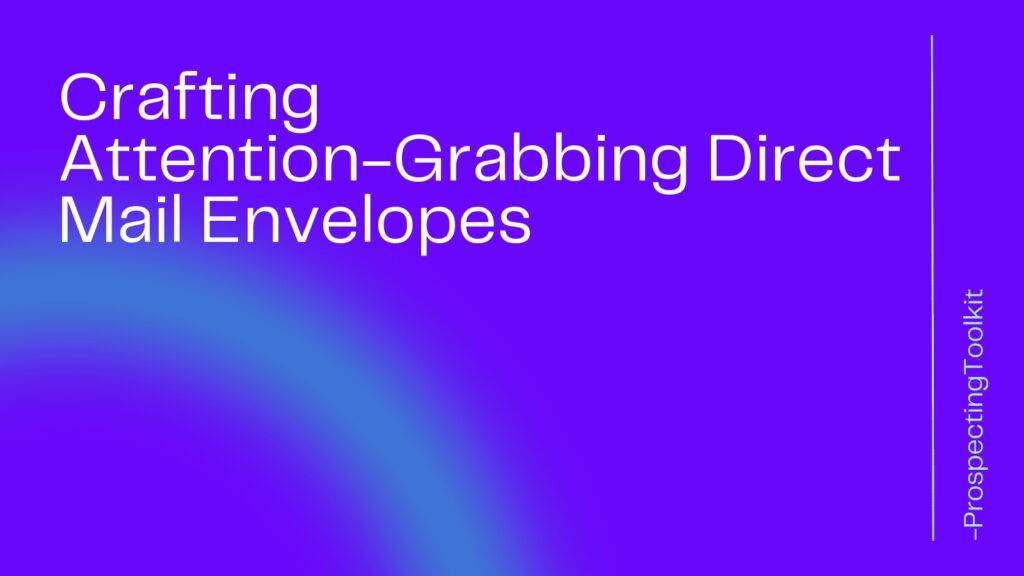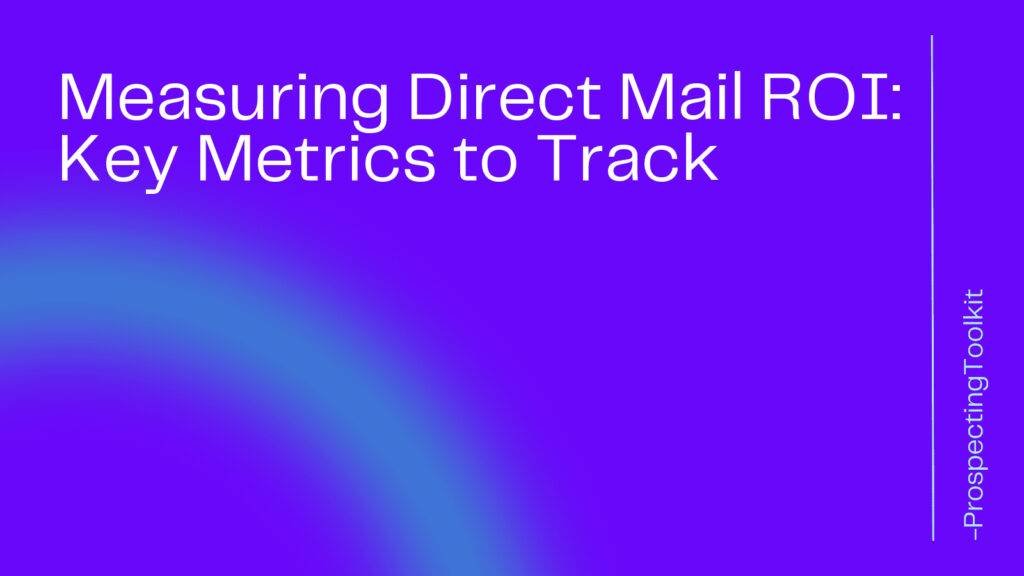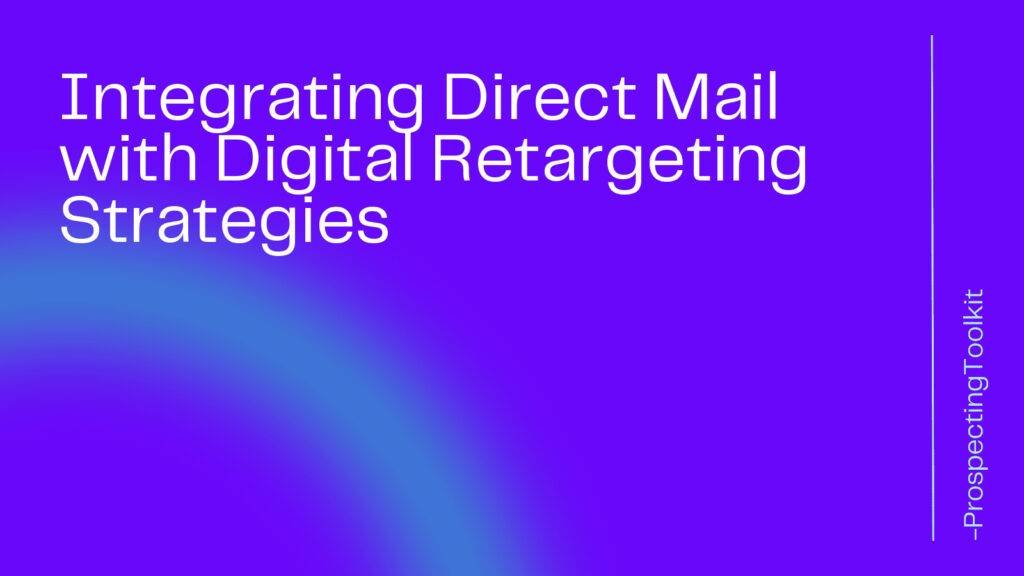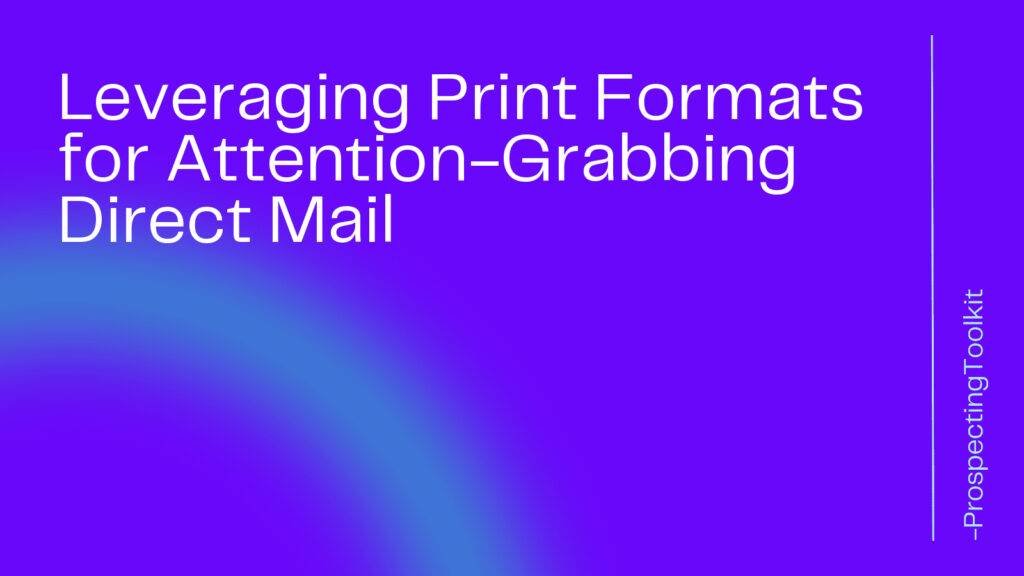Have you ever sent a carefully crafted email to a potential client or customer, only to hear crickets in response?
It can be frustrating to put so much effort into writing and sending a cold email, only to receive no reply.
But don’t worry, there’s a solution – follow-up emails.
In this article, we will discuss how to write an effective follow-up email, best practices for sending follow-ups, using templates for cold email follow-ups, dealing with no response, and measuring success through response rates.
Table of Contents
ToggleKey Takeaways
- Following up after your first cold email leads to way more responses
- Keep it short and simple
- Personalize as much as possible
- Follow up around a week after your initial email
- Use follow-ups to re-engage cold leads
- Send 1-3 follow-ups maximum per campaign, don’t bother people
- Measure open rates and conversion rates to optimize your follow-ups
What is cold email follow-up and why is it important?
So, you know how sometimes you reach out to someone via email and they just totally ignore you?
It’s frustrating, right?
Well, that’s where following up comes in. Basically, it’s all about not giving up and persistently reaching out to that person until you get a reply.
And let me tell you, it’s important AF!
Why? Because chances are, that person is just busy or maybe your email got lost in their inbox.
By following up, you’re not only reminding them about your initial message, but you’re also showing them that you’re serious about whatever it is you’re reaching out for. It’s all about staying top of mind, you know?
Plus, let’s be real, people are busy and sometimes they just need that little nudge to actually pay attention to your email. Trust me, I’ve been there too.
But hey, don’t go crazy and spam them with a million follow-up emails. That’s not cool and it’ll just annoy them.
Instead, give it some time, maybe a week or two, and then shoot them a friendly reminder. Be polite and considerate, and you might just get that response you’ve been waiting for.
So, the bottom line is, don’t be afraid to follow up. Persistence pays off!
The psychology behind effective cold email follow-up techniques
Let’s talk about the psychology behind effective follow-ups.
We all know that sending out cold emails can be a nerve-wracking experience, right?
You put all this effort into crafting the perfect message, and then you wait anxiously for a response that may or may not come. But fear not, my friend, because there’s actually some pretty interesting psychology at play here.
The concept of reciprocity
This is the idea that when someone does something for us, we feel the need to reciprocate.
So, when you send a cold email, you’re essentially asking the recipient for a favor – their time and attention.
By following up, you’re showing that you appreciate their time and you’re giving them another opportunity to reciprocate by responding to your email.
The power of social proof
Humans are social creatures, after all.
We feel more comfortable taking action if we know that others have done it before us. So, using social proof in your follow-up emails can be super effective.
You can mention any positive responses or testimonials you’ve received from other people you’ve reached out to. This creates a sense of trust and credibility.
Persistence
Research shows that it often takes multiple touchpoints to get a reply.
Don’t be afraid to send a few follow-up emails, but remember to be respectful and not spammy.
Persistence shows that you’re serious and determined, and it can actually increase your chances of getting a response.
So there you have it!
Understanding the psychology behind these techniques is key to increasing your response rates.
Keep these tips in mind, and you’ll be well on your way to nail those follow-ups!
How to Write an Effective Follow-Up Email
1. Craft a Compelling Subject Line
The subject line is the first thing your recipient sees, so it’s crucial to make it compelling.
Use a subject line that grabs attention and entices the recipient to open the email. Avoid generic subject lines and try to personalize it based on the recipient’s interests or pain points.
Sometimes it can be best to just leave the original subject line in the form of a “Re:”. Sometimes it can help to come with a different subject line angle entirely. These are things you need to test with your specific target market.
2. Personalize the Email
Personalization is key to make your follow-up email stand out. Address the recipient by their first name and reference any previous interactions or discussions you’ve had with them.
This shows that you’ve done your homework and are genuinely interested in connecting with them.
3. Mention the Previous Email
When writing a follow-up email, it’s important to reference the previous email you sent. This helps to jog the recipient’s memory and provides context for your follow-up.
Be polite and remind them of the key points you discussed in your first email, showing that you value their time and attention.
How to Personalize Your Follow-Up Emails the Right Way
So you sent a cold email and now you want to craft a killer follow-up that won’t get lost in the never-ending abyss of your recipient’s inbox?
Crafting personalized and relevant follow-up emails is like the secret sauce to getting noticed and making a sale.
First things first, make sure you reference your first email in the subject line.
This will jog their memory and hopefully make them stop for a second to actually open your email.
Then, get personal.
Show them that you’ve done your research and that you actually care about connecting with them on a deeper level. Mention a recent article they wrote, or a project they completed – something that proves you’ve taken the time to get to know them.
Keep it short and sweet!
Ain’t nobody got time to read a whole novel in their inbox. Keep your follow-up email concise, to the point, and easy to scan.
Don’t be afraid to inject a little humor or personality into your email.
Nobody wants to read another robotic, boring message. Show them your true self and let your personality shine through. Trust me, it will set you apart from the crowd.
Best Practices for Sending Follow-Up Emails
1. Timing is Key
Timing plays a crucial role in the success of your follow-up email.
You don’t want to send it too soon and come across as pushy, but you also don’t want to wait too long and risk being forgotten.
A general rule of thumb is to wait a few days before sending your first follow-up email, but this is an area that can be experimented with until you start getting replies back.
2. Keep it Short and Concise
Avoid writing lengthy follow-up emails. Keep your message short and to the point, highlighting the key benefits or value you can provide.
People are busy and don’t have time to read a lengthy email, so make it easy for them to understand your message quickly.
3. Provide Value or Incentives
To increase the chances of receiving a response, offer something of value in your follow-up email. This could be a helpful resource, a discount, or an invitation to a webinar or event.
Providing incentives gives the recipient a reason to reply and engage with your email.
Cold email follow-up for different industries: Best practices and tailored approaches
When it comes to following up, there’s no one-size-fits-all. Seriously, different industries need different approaches.
For example, if you’re hitting up a tech startup, get straight to the point – tell ’em how your product or service solves a problem. They love innovation and efficiency, so cut the formalities and hit them with the ‘what’ and the ‘how’.
On the flip side, something like the legal industry would need a slightly more buttoned-up tone, ya know? Show them you respect their professionalism and that your offering aligns with their ethical standards.
A word of advice: always remember to personalize the message.
Show them you know a thing or two about their business and industry.
And here’s the thing – we all hate spammy, duplicate messages, so easy on the persistence, but don’t disappear completely.
Give it a week or two between emails. If they’re interested, they’ll get back.
And lastly, don’t forget to swing them some type of call to action – either asking for a call, a meeting, or simply a response. That should get you started in tailoring your approach.
Using Templates for Cold Email Follow-Ups
1. Customize the Template
Templates can be a great starting point for crafting your follow-up emails. However, it’s important to customize the template to make it more personalized and tailored to the recipient.
Add specific details, references to previous conversations, and any relevant information to make the email feel more genuine.
2. Add Personal Touches
While using cold email templates, it’s essential to add personal touches to your follow-up emails.
Mention something specific about the recipient’s business or industry to show that you’ve done your homework. Personalized emails are more likely to grab attention and garner responses.
3. Test and Tweak the Templates
Don’t be afraid to experiment with different templates and subject lines to optimize your email responses.
Test different variations and analyze which ones perform better.
Keep track of your results and make tweaks accordingly to improve your follow-up email success rate.
Proven follow-up email templates
Here are a few email templates you can use for follow-up emails.
Use Trigger Events to Re-Engage Cold Leads
Subject line: [Award or achievement], next steps
Hi [prospect’s first name],
Congratulations on the successful completion of your company’s recent round of fundraising! It was truly captivating to gain insights into the narrative of your company and its aspirations.
Have you given further consideration to my offer for enhancing your lead generation? I would be delighted to provide a concise summary and address any inquiries you may have on a Zoom call.
Would you be able to squeeze in a conversation on Wednesday at 2:00pm PST? Alternatively, feel free to choose a time that works my calendar: {scheduling link}.
Thanks in advance,
[Your name]
Following Up After an Initial Cold Email
Subject line: Help?
Hi [prospect’s first name],
Hey there! Just wanted to check in on my last email. Haven’t heard a peep from anyone on the team. If you’re up for a chat, just let me know a day and time that suits you best.
If this isn’t part of your job, can you connect me with the correct person?
Thanks!
Have a great day,
[Your name]
Dealing with No Response
1. Follow-Up After a Reasonable Time
If you haven’t received a response to your cold email, it’s essential to follow up after a reasonable time.
This timeframe may vary depending on your industry and the nature of your relationship with the recipient.
Generally, waiting a week or two before sending a follow-up email is appropriate.
2. Adjust the Follow-Up Frequency
If you’re not getting a response after multiple follow-up emails, it may be time to adjust the frequency of your follow-ups.
Sending too many follow-ups can annoy the recipient and decrease your chances of receiving a reply.
Space out your follow-ups strategically to maintain a balance.
3. Modify the Follow-Up Content
If you’re not getting any response, it might be worth revisiting the content of your follow-up emails.
Analyze if there’s something in your messaging that could be improved or if you’re not effectively conveying the value you can provide.
Make the necessary modifications to increase your chances of getting a response.
Strategies for re-engaging cold leads through follow-up emails
So, you’ve got some cold leads that you want to re-engage through follow-up emails.
That’s great!
Timing is key
Take advantage of major calendar events like the end of the quarter or the end of the year.
People are often more receptive during these times, so make sure to craft your emails accordingly.
Keep an eye on any changes that happen within the company or job positions
If someone got promoted or the company expanded, it’s the perfect opportunity to reach out and congratulate them, while subtly mentioning how your product or service can add value to their new situation.
All of this is to show that you actually care about their needs and challenges.
Trust me, if you show genuine interest, you’ll have a higher chance of re-engaging those cold leads.
Measuring Success: Analyzing Response Rates
1. Track the Open Rates
One way to measure the success of your follow-up emails is by tracking the open and reply rates.
Use email tracking software to monitor how many recipients open your emails.
This data provides insights into the effectiveness of your follow-up strategy.
2. Calculate the Conversion Rate
The conversion rate measures the number of recipients who respond to your follow-up email and take the desired action, such as scheduling a meeting or making a purchase.
Track conversions to gauge the effectiveness of your email campaign and make necessary adjustments to increase conversions.
Sometimes you don’t realize that followups are driving results until you analyze the data at large.
3. Experiment with Different Approaches
No two situations are alike, so it’s important to experiment with different follow-up approaches to find what works best for your audience.
Test different subject lines, messaging styles, and follow-up sequences to determine which approach yields the highest response rates for your specific target audience.
Automating Follow-Ups with Cold Email Outreach Tools
Automating follow-ups with cold email outreach tools is like having a personal assistant handle all your email follow-ups for you.
They automatically send follow-up emails based on predetermined rules and intervals, saving you time and energy. It’s super convenient, especially when you’re busy and have a million things on your plate.
Plus, it increases your chances of getting a response because it keeps your email at the top of the recipient’s inbox.
No more forgotten follow-ups or missed opportunities!
Just remember, keep things simple and don’t overcomplicate your workflow.
Cold Email Follow-Up Questions
How do you follow up a cold email?
Well, first things first, don’t be too pushy. Give them some time to respond before you reach out again. If it’s been a week or two and you still haven’t heard back, shoot them a short and friendly follow-up email. Just remind them about your initial message and see if they’re still interested. No harm in giving it a shot, right?
How long to wait after cold email?
The general rule of thumb on how long to wait after cold email is to give it about a week or so. That should be enough time for the recipient to read your email and decide whether or not they want to respond. Of course, every person is different, so use your judgment and don’t be afraid to send a gentle reminder if you haven’t heard back after a while.
How do you politely follow up an email?
You can politely follow up an email like this: “Hey! Just wanted to check in on that email I sent a while ago. I hope it didn’t get lost in your inbox or anything. If you could spare a few minutes to get back to me, that would be awesome. No rush though, just wanted to make sure you received it. Thanks!”
Is it worth sending a follow up email?
Generally speaking, yes it is worth sending a follow up email when you’re cold emailing prospects.
Final Thoughts
Honestly, these emails are like the unsung heroes of the marketing world.
They’re like those persistent little terriers that keep nipping at your ankles until you turn around and say “Fine! What do you want?
But here’s the thing, they really work!
A ton of replies actually come from these follow-ups.
I mean, the whole point of poking someone with an email again is to remind them that you exist and are waiting for a response.
However, it’s super important to write them in a polite and professional way, even if they might start to feel a bit annoying.
The trick to win in this game is all about patience and persistence – just keep them short, sweet, and to the point. Also, remember to respect the recipient’s time and privacy.
A well-planned and strategically executed follow-up can turn a cold lead into a warm opportunity. So, just hang in there and keep sending those follow-up emails!







